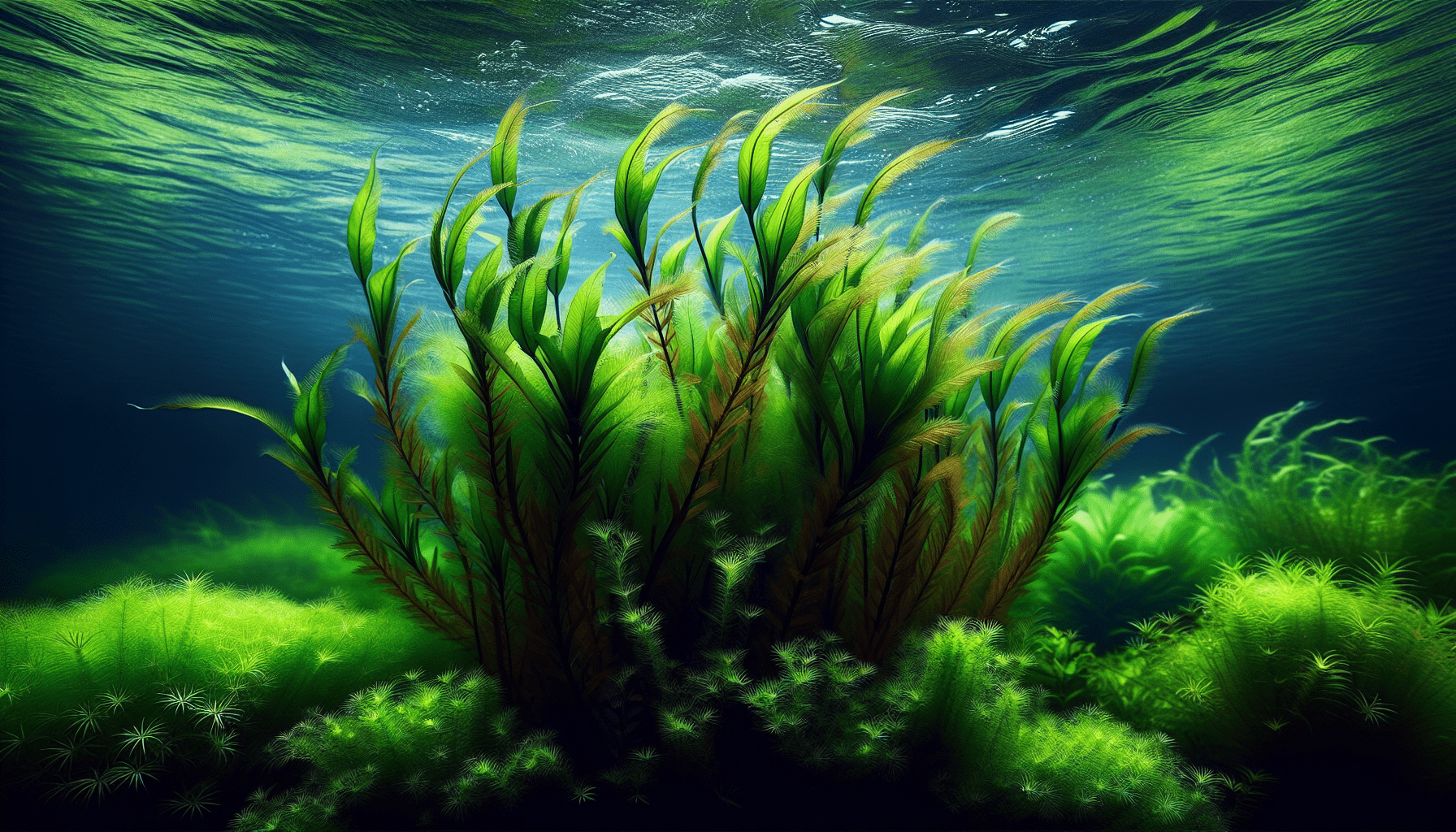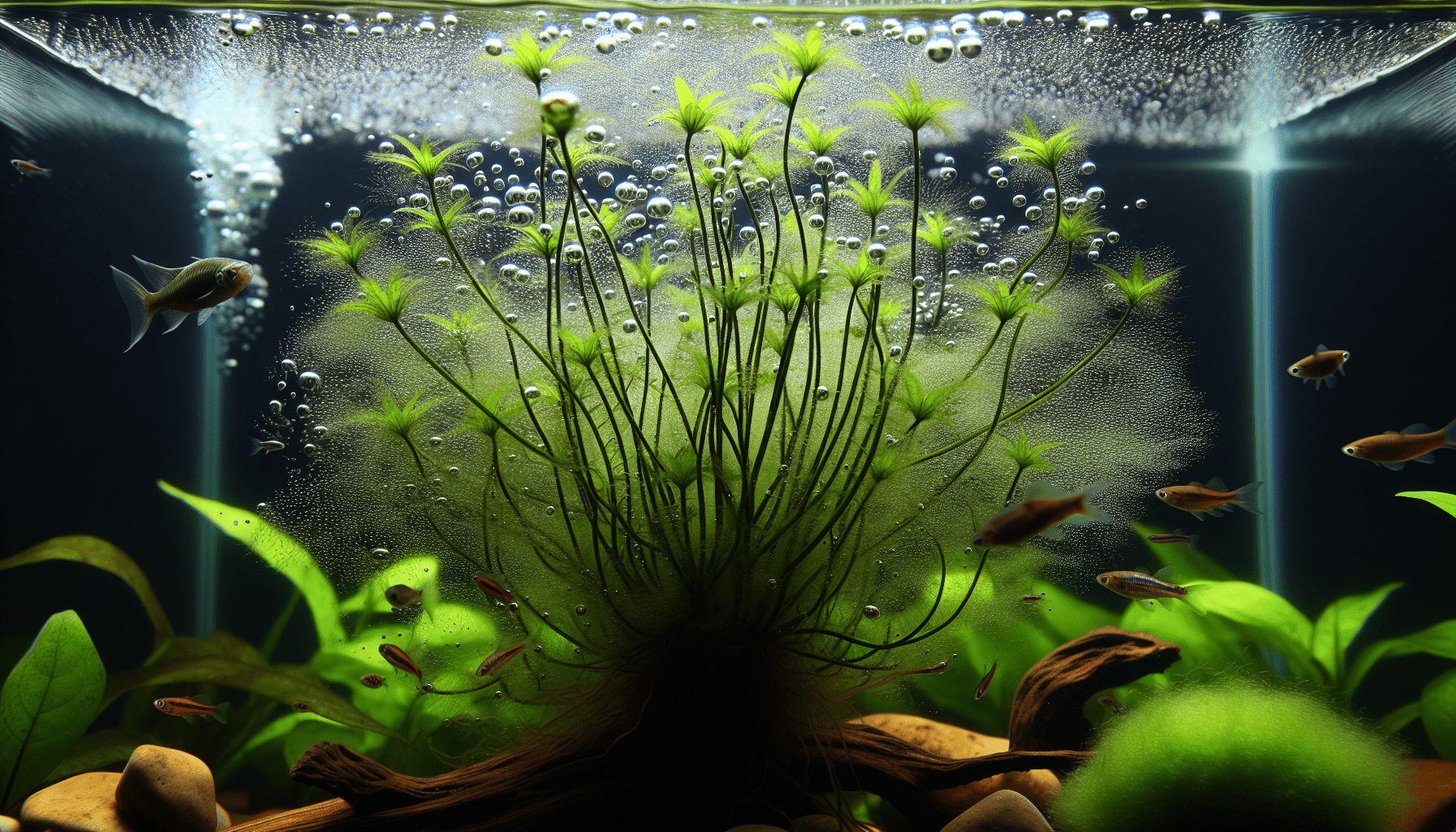In your exploration of aquatic ecosystems, you may encounter the term “elodea,” a genus of submerged aquatic plants often categorized as a weed. This article serves as an informative study of elodea, providing you with details about its origin, its distinctive botanical features, and its profound impact both ecologically and economically. With this knowledge, you will gain a multi-dimensional understanding of this polarizing aquatic organism and its role in our aquatic environments.

Overview of Elodea
Definition and scientific classification
Elodea, commonly referred to as waterweed, is a genus of aquatic plants often referred to as oxygenating plants due to their ability to add oxygen to the water. They belong to the family Hydrocharitaceae and are categorized under the order Alismatales. Elodea is a perennial plant meaning its lifespan extends over two or more years. It is a largely submerged plant, with the exception of small white flowers that appear above the water’s surface.
Place of origin and distribution worldwide
Elodea originates from North America and is most commonly found in streams, ponds, and lakes. From its place of origin, it has been widely distributed on a global scale, either intentionally or inadvertently by human activities. Today, Elodea can be found in aquaria and garden ponds all around the world, and in the wild in numerous countries across North America, Europe, and Asia. However, it is considered native to the cooler regions of North America.
Physical Description
Size and shape
In terms of size and shape, Elodea plants typically grow to heights of 1-3 feet. They possess numerous branched stems that are clothed with whorls of leaves. These whorls may contain three to four, or even more, leaves each, which gives the plant a rather feathery appearance.
Leaf structure and color
The leaves of Elodea are small, only about one inch long, and are equally narrow. These are bright green in color, typically growing in sets of threes, and have finely serrated edges. The leaf arrangement allows for an easy differentiation from other similar looking aquatic plants.
Stem characteristics
Elodea stems are slender, light green, and produce roots at intervals. They are generally stiff and brittle, breaking easily which aids in the propagation of the plant as each fragment can potentially grow into a new plant.
Development of buds and flowers
Elodea plants develop buds that are capable of overwintering in sediment. The flowers, which are small and white, float on the water surface. The female flowers have three white petals and reach the surface of the aquaria or ponds through spiraling stalks while the smaller male flowers detach from the plant and float alongside female flowers for pollination.
Habitat and Ecological Range
Preferred water conditions
Elodea plants thrive best in still or slow-moving freshwater bodies with ample sunlight, such as ponds, lakes, or slow-moving streams. They tolerate a wide range of water conditions, including different pH levels, and can live in both cold and warm waters, although they prefer cooler temperatures.
Tolerance to various climates
Elodea is highly tolerant and adaptable. It can sustain a harsh winter climate by overwintering as buds and then start growing again as temperatures increase. Moreover, it has adapted to tolerate the water chemistry of diverse areas.
Interactions with other species in the ecosystem
As a primary producer, Elodea forms an essential part of the underwater ecosystem, providing food for a variety of invertebrates and serving as shelter for small aquatic organisms. However, the rapid and vigorous growth of Elodea can cause problems by outcompeting other native plants.

Life Cycle of Elodea
Growth phases
The life cycle of Elodea generally includes an active growth phase during the warmer months and a dormant phase during colder months. During the growth phase, Elodea can grow rapidly and extensively cover water bodies.
Reproduction system
Elodea reproduces both vegetatively and sexually. Vegetative reproduction occurs when fragments of stem or leaves break off from the parent plant and grow into a new plant. In sexual reproduction, male and female flowers produced by the plant combine to produce seeds.
Longevity and mortality factors
Elodea is a perennial plant, and individual plants can live for several years. However, the exact lifespan can be influenced by a variety of factors, including light availability, water temperature, nutrient availability, and disturbance from wildlife or human activities.
Nutrient Requirements
Sources of nutrients
Elodea primarily derives nutrients from the water in which it grows. These nutrients are absorbed directly from the surrounding water through the plant’s leaves and stems.
Essential minerals for growth
Like other plants, Elodea requires a mix of macro and micronutrients for growth. These include nitrogen, phosphorus, and potassium, as well as smaller amounts of elements such as iron, manganese, and zinc.
Role of sunlight in photosynthesis
Sunlight plays a pivotal role in the growth of Elodea as it does in other plants. The energy captured from sunlight drives the process of photosynthesis, which enables the plant to convert carbon dioxide and water into oxygen and sugars, the latter of which fuels the growth of the plant.
Role in the Aquatic Ecosystem
Providing shelter and food to aquatic organisms
Elodea plays a significant role in the aquatic ecosystem by offering shelter to small aquatic organisms and serving as a food source for several invertebrates and even some fish species.
Oxygenation of water bodies
Through photosynthesis, Elodea contributes to the oxygenation of water bodies thereby influencing the living conditions for other aquatic organisms.
Impact on water clarity and quality
The prolific growth of Elodea can potentially improve the quality of water by reducing excess nutrients and thereby enhancing water clarity. However, when growth becomes excessive, it may have a negative effect leading to degradation of the aquatic environment.
Elodea as an Invasive Species
Worldwide cases of elodea invasion
Elodea has been reported as an invasive species in several countries where it has been introduced. Due to its aggressive growth and adaptability, it can dominate and alter aquatic ecosystems, leading to significant ecological changes.
Impact on native aquatic flora and fauna
The rapid and extensive growth of elodea can outcompete native plants for space and nutrients. It can also alter habitat conditions, which can have a cascade effect on other species, including invertebrates and fish.
Economic implications of elodea invasions
Elodea invasions can have substantial economic implications. The dense growth can impede waterway navigation, disrupt recreational activities such as swimming and angling, and increase maintenance costs of aquatic infrastructures.
Management and Control of Elodea
Various methods of physical removal
Several physical methods can be used to control and manage the growth of Elodea. These include hand-pulling, bottom barriers to prevent growth, and dredging, among others.
Use of chemical herbicides
Chemical herbicides can be employed to manage Elodea populations. However, caution must be exercised to prevent damaging non-target species and the broader ecosystem.
Biological control options
Biological control agents, such as certain insects or pathogens that specifically target Elodea, can offer an eco-friendly control alternative.
Use of Elodea in Education and Science
Role in teaching photosynthesis
Elodea is often used in classrooms to teach students about photosynthesis as it can be easily observed under a microscope, revealing the process of how plants produce oxygen.
Use as a model organism in ecological studies
Due to its widespread distribution, Elodea serves as an important model organism in various ecological and environmental studies, providing insights into the impacts of invasive species.
Potential medicinal and commercial uses
While the commercial uses of Elodea are limited, it is commonly utilized in aquariums for its oxygenating and aesthetic properties. Research is ongoing to explore potential medicinal uses of this plant.
Future Perspectives on Elodea
Effects of climate change on elodea distribution
The impacts of climate change may affect the distribution and growth of Elodea, potentially enhancing its invasive capacity in some regions.
Emerging control methods and research directions
New methods are being explored to control the spread of Elodea, including genetic techniques and integrated pest management strategies.
Long-term ecological implications of elodea presence
The long-term implications of Elodea invasions are significant and call for sustained research efforts. Unchecked, the plant can continue to alter aquatic ecosystems, with cascading impacts on biodiversity and ecosystem function.